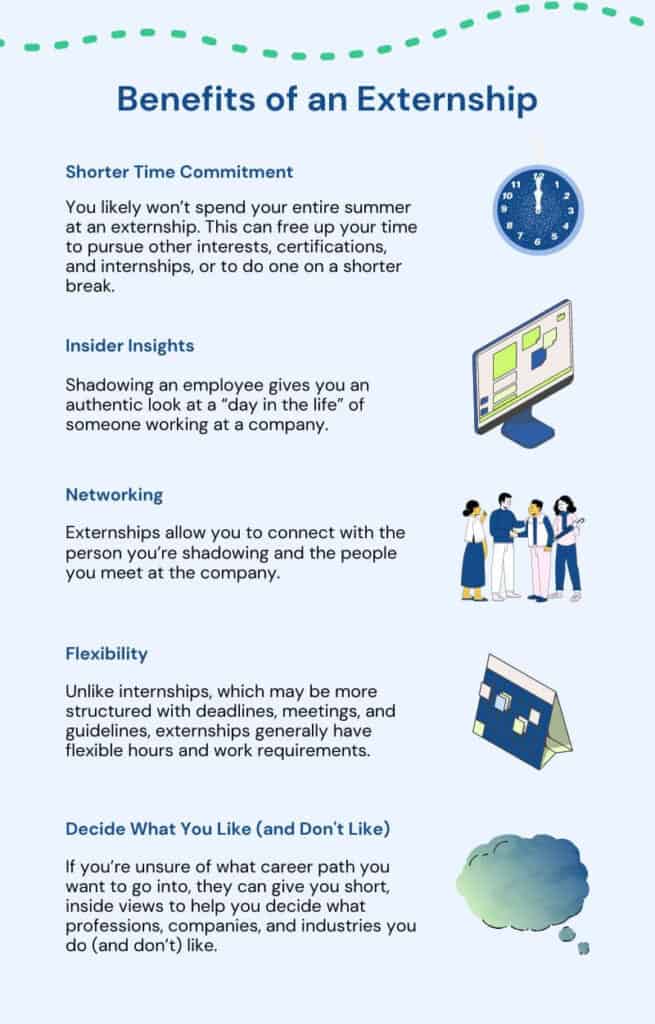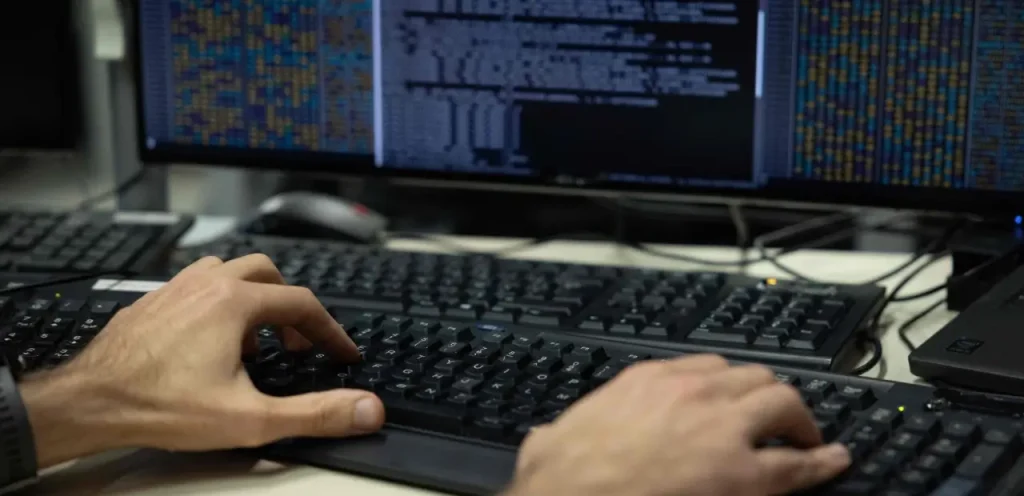A software developer’s day often begins with a code review and progresses into writing and debugging software. Collaborative meetings and problem-solving sessions punctuate their schedule.
Delving into the world of a software developer, one experiences a dynamic blend of creativity, technical expertise, and methodical problem-solving. Each day presents the challenge of transforming ideas into functional software through a meticulous process of coding, testing, and revision.
The role demands a curious mind that continuously adapts to ever-evolving technological landscapes, requiring ongoing learning and skill enhancement. Developers usually partake in agile team rituals, synergistically work towards deadlines, and regularly interact with stakeholders to clarify requirements. Balancing personal productivity with cross-team collaboration, they maintain a pulse on industry trends while ensuring their code aligns with best practices. The fusion of autonomy and teamwork makes a developer’s routine not just technical, but also socially engaging and intellectually enriching.
Morning Routine Of A Software Developer
Starting The Day: Early Risers Vs. Night Owls
Every developer has a unique body clock. Some wake up with the sun, ready to code, while others find peak creativity when the moon shines. Let’s see how these habits shape their mornings:- Early Risers: They often start with a plan. Check emails, review code, quiet hours to focus.
- Night Owls: Might hit snooze a bit more. They work late; morning is to recharge.
Breakfast Rituals And Nutrition For Brainpower
Breakfast is key for a productive day. Good nutrition fuels the mind, especially for the complex tasks ahead for developers:- Hydrate: Start with water to wake up your system.
- Wholesome Meal: Include proteins, whole grains, and fruits for sustained energy.
- Smart Caffeine: Some prefer coffee or tea, but it’s important to not overdo it.

Credit: insights.daffodilsw.com
Planning The Work Day
Assessing The To-do List
Every morning starts with a quick review of pending tasks. Developers sip coffee and list what they must tackle during the day. This list acts as a roadmap, highlighting top priorities and urgent bug fixes. Sorting tasks is vital. Some choose to attack the toughest problems first, while others warm up with easier issues. The goal is clear: identify what needs completion to make today a win.Setting Daily Goals And Time Blocks
After understanding the day’s scope, developers set attainable goals. Breaking down complex projects into small, measurable objectives makes them less daunting.- Clear, concise targets are penned down.
- Every task gets a specific time slot.
- Short breaks are interwoven to stay fresh.
| Time Block | Task Category | Goal |
|---|---|---|
| 9:00 am – 10:30 am | Project Development | Complete Module X Interface |
| 11:00 am – 12:00 pm | Bug Fixes | Resolve Login Issue |
| 1:00 pm – 2:00 pm | Team Collaboration | Plan Next Sprint |
The Commute: Time Management On The Move
Public Transport Vs. Car Rides
Choosing between public transport and a personal vehicle impacts time and well-being. Public transport offers a hands-free experience where one can catch up on reading or learning new skills. Driving, on the other hand, gives privacy and control over timing but demands full attention on the road.| Public Transport | Car Rides |
|---|---|
| Extra time for personal development | Flexibility and privacy |
| No parking concerns | Control over environment |
| Potential for delays | Requires focus, can’t multitask |
Using Commute Time Productively
Whether on a train or behind the wheel, turning travel time into an opportunity is key. Here are some ways software developers can make the most of their commutes:- Listen to podcasts on new technologies or industry news.
- Plan the day ahead with to-do lists.
- Use language learning apps to pick up new skills.
- Reflect on professional goals and personal growth.

Credit: www.theforage.com
Office Arrival And Environment Setup
Creating A Productive Workspace
A developer’s desk is their command center. Arranging this space is critical for an efficient workflow. Personal touches are key to comfort and inspiration throughout the day. Cleanliness and order are also vital, preventing clutter from turning into chaos.- Personalized arrangements with photos or figurines.
- Neat cable management for a tidy look.
- Comfortable chairs align to an ergonomic posture.
Essential Tools For A Developer’s Desk
With hardware and software at the ready, productivity skyrockets. Each developer’s toolkit is tailored to their needs, but certain essentials are common.| Tool | Importance |
|---|---|
| High-resolution monitor(s) | Key for crystal-clear coding. |
| Reliable Keyboard and Mouse | For precision and comfort. |
| Noise-Cancelling Headphones | Blocks out distractions. |
| Code Editors | Vital for the craft. |
| Version Control System | Keeps changes organized. |
Diving Into Code
Embarking upon a new day, software developers dive deep into the digital depths of coding, bringing innovations to life. Through a series of carefully structured tasks, developers engage in a delicate dance with code, weaving together the very fabric of our tech-driven reality. Let’s plunge into the detail-rich world of a developer and uncover the intricacies of a typical day’s work. Reviewing Code from Previous Day
Reviewing Code From Previous Day
With fresh eyes and renewed focus, the first task in a developer’s routine is to revisit the previous day’s work. A retrospective glance helps catch pitfalls and encourages improvements before moving forward. Here’s what it involves:
- Evaluating the functionality of the last written features
- Running through tests to ensure no bugs have crept in unnoticed
- Refining code with optimization techniques for better performance
Tackling the Hardest Tasks First
Tackling The Hardest Tasks First
Equipped with a proactive mindset, developers zero in on the most challenging tasks. Starting with the complex problems ensures creative energies are at their peak and momentum is undisturbed for the rest of the day. Here’s what taking on the big challenges may include:
- Breaking down tasks into manageable sub-tasks
- Sketching out approaches using pseudo-code or diagrams
- Coding with focus, often implementing sophisticated algorithms
- Testing rigorously to confirm correct functionality
As developers, the blend of creative ingenuity and analytical prowess sets the pace for creating software marvels. Each line of code is a building block towards something bigger, something transformative. Embracing the challenge head-on, software developers emerge daily, not just as coders, but as architects of the digital tomorrow.
Staying Focused Amid Distractions
Dealing With Interruptions And Meetings
Interruptions are a part of every developer’s day. They come in various forms: emails popping up, chats from colleagues, or the sudden need to join a meeting. A game plan to tackle these unexpected visitors can make all the difference. One strategy could be setting specific times for checking emails. Communicating your deep work hours to your team helps as well; they know when to expect your attention and when you’ll be heads down coding.- Allocate specific times for checking emails and communications.
- Use status indicators to inform your team about your availability.
- Assess the urgency and relevance of meetings before attending.
Pomodoro And Other Focus Techniques
Combatting the lure of distractions also comes down to personal discipline and the techniques used to maintain it. The Pomodoro Technique, named after a tomato-shaped kitchen timer, involves working in focused sprints with short breaks in between. Each sprint, or Pomodoro, typically lasts about 25 minutes. This method encourages productive bursts of work and provides scheduled slots for those unavoidable break requests.- Work for 25 minutes, then take a 5-minute break.
- After four pomodoros, take a longer break (around 15-30 minutes).
- Adapt the length of pomodoros and breaks to fit personal productivity rhythms.
Collaborating With Teammates
Pair Programming Sessions
Pair programming is like a dance between two programmers. It requires perfect harmony. In a pair programming session, one developer writes the code (the driver) while the other reviews each line (the navigator). This real-time collaboration leads to fewer mistakes and better code. Below are the benefits:- Less Bugs: Two eyes catch more than one.
- Knowledge Sharing: Junior developers learn from senior ones.
- Team Bonding: Developers grow closer by working together.
Communicating Effectively With Non-developers
Clear communication bridges the gap between technical and non-technical teams. Developers must regularly converse with stakeholders, project managers, and designers. To succeed, they adapt complex terms into simple language.| Complex Term | Simplified Explanation |
|---|---|
API |
It lets apps talk to each other. |
Branch |
It’s a copy of the project to work on safely. |
Merge Conflict |
It happens when code clashes, and needs fixing. |

Credit: www.amazon.com
Coffee Breaks And Downtime
Importance Of Taking Short Breaks
You might think non-stop coding means more work gets done. Not true! Short breaks actually boost productivity and creativity. Here’s why:- Prevents burnout: Regular breaks keep stress levels down.
- Improves focus: Stepping back renews concentration.
- Enhances problem-solving: Downtime can lead to ‘Aha!’ moments away from the desk.
The Coffee Machine: A Networking Hub
Believe it or not, the coffee machine does more than just dispense caffeine. It’s a place where collaboration and casual chats lead to innovation and opportunity. Check out its hidden perks:- Builds relationships: Casual talks with colleagues strengthen team dynamics.
- Sparks new ideas: Conversations often lead to unexpected solutions.
- Expands networks: Meeting people from different teams can open up new pathways.
Lunch Break: A Time To Recharge
Choosing Healthy Lunch Options
Selecting nutrient-rich meals during the lunch break can boost productivity for the afternoon’s challenges. A balanced plate keeps the mind sharp and energy levels steady.- Lean proteins: Aid in keeping you feel full and focused.
- Complex carbohydrates: Provide a steady release of energy.
- Fruits and vegetables: Offer essential vitamins for brain health.
| Food Group | Benefits | Examples |
|---|---|---|
| Proteins | Maintains muscle health | Chicken, Tofu, Fish |
| Carbs | Supplies energy | Whole grains, Beans, Nuts |
| Fruits/Veggies | Boosts immune system | Berries, Leafy greens, Carrots |
Socializing Vs. Solitude
During lunch, some developers enjoy socializing. Swapping stories and sharing laughs can ease stress. Others prefer solitude to decompress. A peaceful corner or a short walk provides a quiet moment for personal reflection. This alone time can spark creativity for solving complex coding problems.- Joining colleagues can build team spirit.
- Solo activities might include reading or meditating.
- Balance is key; mixing social days with quiet ones is beneficial.
Afternoon Productivity
Overcoming The Afternoon Slump
Concentration can wane as the clock strikes two, signaling the infamous afternoon slump. Smart strategies are essential to stay on track:- Short breaks boost focus and clarify thought processes.
- Quick, light exercises at the desk re-energize the body and mind.
- Switching tasks can keep the brain stimulated and ward off monotony.
- A small, healthy snack may replenish energy levels.
Prioritizing Tasks For The Day’s Second Half
Task prioritization is vital post-lunch. A clear plan leads to effective outcomes:- Review the morning’s progress and adjust the day’s goals accordingly.
- Identify tasks that require high concentration and tackle them first.
- Break down complex projects into manageable chunks.
- Use time management techniques like the Pomodoro Technique to stay focused.
Attending Meetings And Stand-ups
Regular Stand-up Meetings Insights
Quick, daily stand-ups keep teams aligned. Developers share what they did yesterday, their plans for today, and any roadblocks. This transparency is key.- Duration: 15 minutes or less
- Focus: Progress, plans, and problems
- Benefits: Encourages teamwork and accountability
Effective Participation In Team Meetings
When the whole team gathers, effective participation is crucial. Developers contribute ideas, discuss solutions, and decide on action items.- Prepare: Agenda, updates, and questions ready
- Engage: Actively listen and share insights
- Follow-up: Ensure tasks are clear post-meeting
Keeping Up With Technology And Trends
Learning New Programming Languages And Tools
A modern software developer’s toolkit is always expanding. With new languages and tools constantly emerging, mastery is a moving target.- Online Courses: Developers often use platforms like Coursera or Udemy to learn.
- Books and E-books: Many turn to literature for a deep dive on specific topics.
- Tutorials: YouTube and blog tutorials serve as excellent resources for step-by-step learning.
- Open Source Projects: Working on open source allows hands-on practice with new tools and languages.
Staying Informed About Industry News
Keeping abreast of industry news is just as vital as hands-on learning. It informs decisions about which skills to develop next.- Subscribe to newsletters: Newsletters from respected tech news sources are great for updates.
- Join tech communities: Forums and social media groups provide discussion and insight.
- Attend conferences: Events and meetups offer exposure to emerging trends.
- Follow influential figures: Experts and thought leaders in technology can guide one to important topics.
Problem-solving And Debugging
Strategies For Effective Debugging
Effective debugging is like finding a needle in a haystack. Developers use strategies to make it easier.- Understand the problem: Before fixing the code, they get to know the issue inside out.
- Break it down: By dividing the code into smaller parts, they spot bugs faster.
- Use tools: Debuggers, logs, and tests are their best friends in this game.
- Check the basics: Sometimes, a simple typo can cause big headaches.
- Change one thing at a time: To avoid more confusion, they adjust one piece before retesting.
When To Ask For Help Vs. Independent Research
Good developers know when to dive into research and when it’s time to reach out. It’s all about balance.| Independent Research | Ask for Help |
|---|---|
| Online forums | Team meetings |
| Documentation | Mentors |
| Experimenting with code | Pair programming |
| Tutorials | Professional help |
Progress Check And Daily Wrap-up
Assessing Today’s Achievements
A thorough review of daily accomplishments is critical. Developers take this time to reflect on the tasks completed. This not only provides a sense of closure for the day but also brings a satisfying sense of progress. Key points assessed include:- Code commits: How much code did the developer check into the source repository?
- Problems solved: Which issues got resolved today?
- Quality checks: Did the code pass all tests?
Preparing For Tomorrow’s Objectives
With a clear understanding of where they stand, developers turn to the next day’s plan. This step is pivotal in maintaining momentum. A well-prepared to-do list for the upcoming day may include:- Identifying priority tasks: Deciding what to tackle first.
- Allocating time for research: Setting aside periods for learning and exploration.
- Reviewing schedule: Confirming meetings and collaborative sessions.
Evening Unwind: Life After Work
Work-life Balance Strategies
Finding a harmonious balance between career and personal life is crucial for a software developer’s well-being.- Set Boundaries – Define work hours and stick to them.
- Disconnect – Turn off work notifications post-work hours.
- Time Management – Prioritize tasks and include breaks.
- Relaxation Time – Dedicate evenings to relax and rejuvenate.
Hobbies And Activities Outside Of Coding
Engaging in hobbies brings joy and reduces stress for developers after work.| Hobby | Benefits |
|---|---|
| Reading | Stimulates the mind and relaxes the body. |
| Sports | Improves physical health and social skills. |
| Music | Encourages creativity and emotional release. |
| Art | Enhances creativity and mental focus. |
Staying Healthy: Physical And Mental Wellness
Exercise Routines For Developers
Regular physical activity keeps the body strong and the mind sharp. Even with a packed schedule, developers can benefit from incorporating exercise into their routine.- Stretching: Take 5 minutes every hour to stretch. This improves circulation and prevents stiffness.
- Desk exercises: Shoulder shrugs, wrist rolls, and ankle circles can be done while seated.
- Quick workouts: Dedicate 20 minutes for a high-intensity workout before or after work.
- Walking: A short walk during breaks can refresh the mind and stretch the legs.
Mindfulness And Stress Reduction Techniques
Mental wellness is as important as physical fitness. Mindfulness practices help maintain a calm and focused mindset.- Deep breathing: Practice deep breathing for 5 minutes to decrease stress levels.
- Meditation: Start or end your day with 10 minutes of meditation to clear your mind.
- Breaks: Regular breaks prevent burnout and keep motivation high.
- Hobbies: Engage in activities you love to break the monotony of coding.
Networking And Community Participation
Industry Meetups And Conferences
For starters, developers tap into industry meetups and conferences.- They exchange ideas with peers.
- They stay updated with emerging technologies.
- They learn from notable experts.
Contributing To Open Source Projects
Another key area is contributing to open source projects. Why do they engage here?| Reason | Benefit |
|---|---|
| Collaborate globally. | Expand networks. |
| Improve coding skills. | Gain practical experience. |
| Give back to the community. | Enhance software for everyone. |
Reflection And Continuous Improvement
Self-review And Skill Assessment
At day’s end, software developers take time for self-review. They ask key questions. “How did I do today?” “What could be better?” This helps them see what skills need work. Let’s explore some review points:- Code Quality: Was the code clean and efficient?
- Problem-Solving: How quickly did they fix bugs?
- Teamwork: Did they help colleagues succeed?
Setting Career Goals And Aspirations
After self-review, developers think about the future. They set career goals. These goals guide their learning. Here’s how some might lay out their goals:| Short-Term Goals | Long-Term Aspirations |
|---|---|
| Learn a new programming language. | Become a lead software architect. |
| Master a new development tool. | Start a tech company. |
Frequently Asked Questions On A Day In The Life Of A Software Developer
What Is A Typical Day As A Software Developer?
A typical day for a software developer involves coding, attending meetings, debugging, collaborating with team members, and conducting code reviews. They plan tasks, write tests, and document their progress throughout the day. Breaks and learning new technologies often round out the schedule.
How Many Hours Do Software Developers Work A Day?
Software developers typically work 8 hours daily, aligning with the standard full-time workday. Workloads may vary, leading to longer hours to meet project deadlines.
What Does The Daily Life Of A Software Engineer Look Like?
A software engineer typically starts their day checking emails and project updates. They spend time coding, attending meetings, troubleshooting issues, and collaborating with team members. Breaks are taken as needed, and the day often ends with goal review and task planning for the next day.
Do Software Developers Sit All Day?
Software developers often have desk jobs that involve sitting, but many incorporate standing desks and regular breaks to reduce sedentary time.
What Does A Software Developer’s Day Entail?
A software developer’s day typically includes writing code, attending team meetings, debugging programs, and collaborating on project development.
How Do Software Developers Manage Tasks?
Software developers manage tasks using tools like JIRA, Trello, or Asana, prioritizing them based on deadlines and project requirements.
Conclusion
Embracing the life of a software developer reveals a dynamic blend of challenge and creativity. It’s a vocation fueled by a passion for problem-solving and innovation. As each programmer weaves through codes and collaborates on groundbreaking projects, their days are never dull.
Remember, behind every sleek application, there’s a dev with a story. Join the digital creators shaping our tomorrow, and maybe find your own code-infused path.










